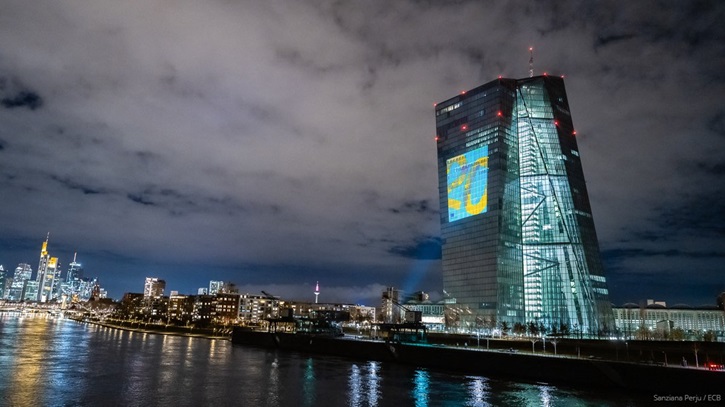Ollie Smith: Its income week on Morningstar.co.uk. And in the second part of my videos with fund managers on income, I'm asking JPMorgan's Global Core Real Assets trust manager, Phil Waller, for his take on the I word.
Phil, thanks for joining me. How does your trust create income? And in the context of bonds, what's its performance looking like?
Phil Waller: So, for JPMorgan Global Core Real Assets, which I'll call JARA, because it's its ticker and easier to get out, we are investing in a global portfolio of real assets, so real estate, infrastructure and transportation. And importantly, when it comes to income, is we are focused on the core end of the spectrum, which in our kind of definition is really the real assets that produce the majority of their return from income, and importantly, that income is contracted or often regulated. And so, it's quite predictable and forecastable in nature. So, to give you an example, if you're looking at renewable energy, which is an area of the portfolio, the wind farms or the solar farms will produce electricity. They'll then sell that to a counterparty, typically under a pre-agreed contract, and that's generating the income which is obviously important to a lot of investors. Now, because of that, that income is often quite uncorrelated in nature. It's coming from quite a differentiated source. And so, actually, you typically see the correlation of real assets being quite different to equities and fixed income. And so, actually, real assets had a pretty robust 2022 thus far. And actually, if you look at JARA share price through the end of October, we're up around 6%, so pretty robust in what's been a difficult market.
OS: Okay. Speaking of difficult markets, I mean, we're looking at a new inflationary world, aren't we? I mean, how do you feel about that as the manager of a real assets trust?
PW: Yeah. Typically, we would actually think that core real assets in particular tend to benefit from inflation over time, because these contracts and these regulated structures that I just mentioned often do allow for these assets to pass on higher costs and generate high revenues in line with inflation. So, typically, a lot of these contracts have in place for every year there to be a review and for a markup or a pass on of certain costs to happen. So, actually, an inflationary environment, particularly the one that is persistent and also just generally higher inflation on an equilibrium basis should actually benefit real assets because of the nature of these contracts and actually the higher revenues that they should be able to generate.
OS: You mentioned transportation as a part of the portfoli. Is that an exciting area of real asset investing at the moment? Or there are more exciting areas?
PW: Yeah, I think transportation – particularly since the pandemic – has been one benefiting from a lot of tailwinds, as you've had shortages in a lot of markets. But generally, I'd say what's exciting us across the portfolio right now is the assets that are going to play a really, really important role in the energy transition. And I would say, somewhere between 25% and 30% of JARA's portfolio is invested across assets that in some way contribute to this. And I think, particularly in the short term, what is particularly exciting is assets that can help countries and economies generate better energy stability and energy security. And so, renewables, again, is one of them, allowing people to have more control over their energy supply but also natural gas. So, for example, find areas very interesting such as liquid natural gas carriers that help move natural gas around the world, but also gas storage facilities that are helping countries have higher levels of gas to deal with cold winters that may come round. So, assets that can contribute to this, I think, are going to be very, very important and exciting in the medium and also the long term.
OS: And just briefly, are you looking to increase that allocation to 30%, 40%?
PW: That, as I said, an allocation that has steadily increased over time, and it still looks like a strong pipeline there going forward.
OS: Yeah. Finally, how healthy is the office? I wanted to ask you that. We've come out of the pandemic; people seem to be spending more time in the office. From a commercial perspective, what do real assets look like there?
PW: Yeah. So, within JARA, we have roughly 10% of our portfolio allocated to office on a global basis, primarily in the US and Asia Pacific. And that's a number that's come down since the start of 2020. Really, as you say, I think office is evolving. The office market is evolving. How we're working is evolving. And office space needs to evolve with that. And you have seen some challenges, and I think you're probably going to likely see some challenges in certain assets that are less well-positioned, both in terms of actual position, attractive locations that people want to work in, but also when people get to work, is it an environment they want to be in, because now they have the choice as to whether they're in work or at home. And so, actually, we are seeing a kind of bifurcation of the office market where these less attractive assets are potentially going to have a bit more of a struggle. But actually, well-positioned assets, assets that are newer, more efficient are attractive places to work are still commanding a premium. But definitely, it's a market that's evolving, and we are looking at how our allocation as well evolves with that.
OS: And in terms of what makes a place an attractive place to work, does that mean that the office sites where there are kind of integrated health and social and food courts are more attractive. Is that still part of the premium?
PW: In broad sense, yes. And if you think about last mile amenities a lot for our kind of tenants, so when they get to work, have they got a gym, the showers that they need because they may be traveling through different methods and just generally, as you say, a lot of these amenities are very, very important to people. And then, also, there's a kind of a cultural aspect as well. And actually, I think what we've seen with our office assets in the U.S. and Asia Pacific is these are actually markets that are a bit more office-orientated than maybe what you've seen in Europe. And so, I think we've seen more people come back to the office there just because it's more of a cultural aspect as well.
OS: Phil, thank you so much. For more on income, check out Morningstar.co.uk all through this week. Until next time, my thanks to Phil. I've been Ollie Smith for Morningstar.


























